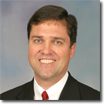
 By Brad Hall
By Brad Hall
September 3, 2009
The 1950s and 60s were recovery years. World War II had decimated most European and Asian countries. Cities needed new infrastructure; businesses needed buildings; and citizens wanted durable goods. Manufacturing drove global economic growth. During this era, Edward Deming, an NYU professor and manufacturing expert, studied numerous manufacturing companies and found that there was no “system” for reliably improving manufacturing productivity. Deming felt that manufacturing managers focused on short-term production, but were not systematically improving production capacity. His response was to create a system for improving capacity called “Statistical Process Control.”
Unable to find an interested company in the U.S., Deming convinced the Japanese government to try out the new system. Japan’s government officials tested it in several companies, achieved excellent results and rolled it out to other manufacturers. In 20 short years, Japan was transformed from a country known for its cheap goods to the world’s premier manufacturer. By 1982, Japan’s GDP per capita matched and soon surpassed Western Europe. Through a dramatically improved standard of living, Deming’s work benefited virtually every Japanese citizen. And that impact is still felt today.
Fast forward to 2009. Over 75 percent of GDP from advanced countries comes from services. Competitive advantage is less dependent on JIT, Kanban and LEAN-type systems. Think about service businesses like construction, a hedge fund, or even a house cleaning. These are pure people plays. If a house cleaning company has better people than its competitors, it will steal customers and command a better price. Do companies know if their people are better than competitors or even, if the total capability of their workforce, their human capital, is better than the previous year?
Like Statistical Process Control of the 1960s we need a system for measuring, managing and growing workforce capabilities and performance. You certainly have HR programs; probably lots and lots of HR programs. Have they improved your competitive advantage? How would one measure that? And, in your company, who is in charge of that? It’s time to build a new model that “bends” the curve on workforce productivity. Here is one to consider.
Component 1: Effective Executive Teams
Question to Answer: “Are the outputs of our team ‘better’ than last year?”
If the top is not right, few of the initiatives below will matter. Effective executive teams design a business strategy and ensure the organization can effectively deliver the strategy. Are your strategies getting better? Are your execution capabilities improving?
Component 2: Key Position Excellence
Question to Answer: “Are those in key positions better than last year?”
Not all positions are equally important to the bottom line. Sales reps have more impact on financial results than receptionists. Call center reps impact customer satisfaction more than accountants. All roles are essential to run a company, but some are more important than others. Create a system that drives objectively measured performance improvements in these positions. In shorthand, here’s how:
-¢ Clarify success measures for the role (i.e., lagging indicators of performance). “How will I know when I am successful?”
-¢ Define the 4-5 most important activities for each role. For each key position, define the 4-5 most important things to accomplish to deliver the success measure. If the success measure is sales quota, these are the most important activities to achieve quota.
-¢ Assess all incumbents and move low performers. Assess each key position member on each activity. How do the top 5 percent perform the activity?
-¢ Design HR systems to improve performance on the key activities. Use information from the top 5 percent to create a training program aligned to the activities. Appraise, coach, even allocate base pay increases for relative performance (vs. peers) on the activities.
Component 3: High-Performance Culture
CEOs love to talk about company values in good times, but often ignore those same values when times are tough. If that sounds like you, this may be a good time to confess your sins and reset your values. Let your employees set the new values. Run focus groups and be as transparent as possible. Once set, assign a team of high potentials to be accountable for measuring, managing and closing value gaps year-over-year. Where there is accountability, there will be progress.
In many businesses today, people are the competitive advantage. “When our guys are better than your guys, we win.” Be first on the block to build a disciplined system for growing human capital.
Bradley W. Hall is managing director for Human Capital Systems, a consultancy specializing in driving year-over-year improvements in workforce capabilities and performance. He holds a PhD in Industrial/Organizational Psychology from Tulane University. Contact him at brad @bradleyhall.com.







